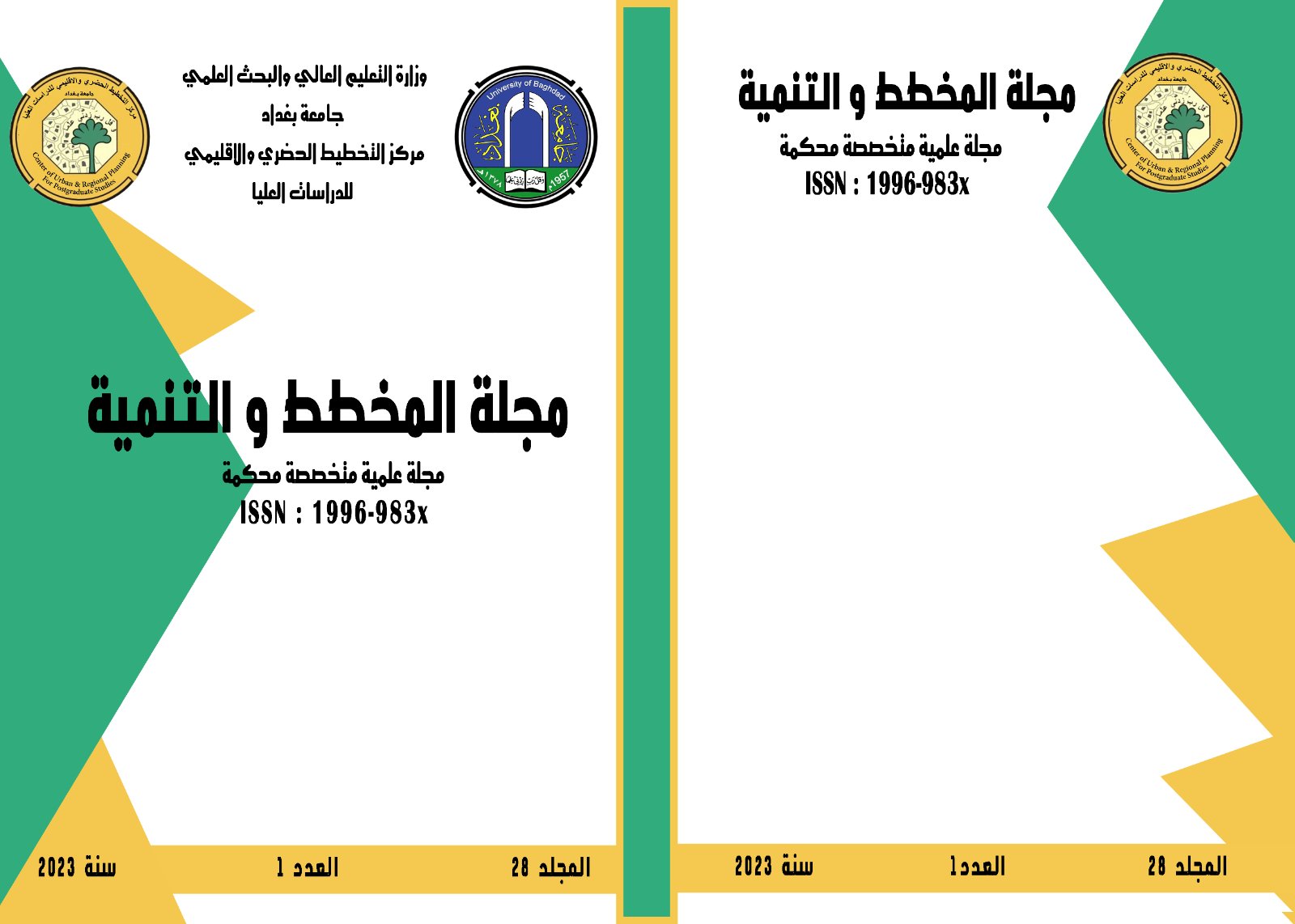the Planning and Management of Services in Rural Areas, AL-Gharraf sub-district in Dhi Qar Governorate, a case study.
Abstract
Bringing about urban, economic, and social changes in rural areas similar to those occurring in urban areas aims to reduce urban-rural disparities by providing services in those areas, decentralizing the management of these services, expanding citizen participation in local governance (decentralized administration), and achieving comprehensive development, developing and empowering localities, and keeping pace with new transformations and their impacts on the functions of the center and localities. In fact, the lack of clarity of the role of local government in planning and managing services has hindered development plans, and declined the level of services in rural areas, and has negatively affected the comprehensive development process. However, local government contribute directly to the development of rural areas through participation in the preparation of local plans, and the management of various services in rural areas by their residents is more effective.
The research problem is summarized in the absence and lack of clarity of the role of local government in planning and managing services, which led to obstruction of development plans, and a decline in the level of services in rural areas and negatively affected the comprehensive development process.
The research hypothesized that local governments contribute directly to the development of rural areas through managing services in different rural areas, and that participation in preparing local plans will contribute to translating regional and national plans into realistic plans.
Within the theoretical framework of the research, the role of local governments (starting from the sub-district council to districts councils and provincial councils) was reviewed in identifying, evaluating needs and including them in development plans according to their priorities. The second part reviews the role of these local governments in managing and directing these services to achieve the desired public benefit and to develop rural areas.
As for the practical framework of the research, the Al-Gharraf sub-district of Al-Shatrah district was chosen as the focus of the practical study, which included studying the reality of community services and infrastructure services in rural villages and the urban center and the hierarchical relationship in the administrative and planning aspects between them in the sub-district, and in two directions:
- Studying the status of the services provided in terms of spatial distribution, the type and quantity of services provided, and comparing them with the approved planning standards and citizens’ desires.
- Studying the mechanism of the planning process for services and managing them at the local level, and the problems and obstacles facing this planning and administrative process in these areas.
Two questionnaires were prepared that relied on collecting data for the study area and surveying opinions for each segment (officials and citizens) and evaluating them about the availability and effectiveness of the process of planning and managing services in the study area based on a set of indicators
that determine the level of services in rural areas.And for the purpose of achieving the goal of the research: -
The research relied in proving its hypothesis on the descriptive-inductive approach in achieving its objectives, and finding appropriate solutions to enhance the process of planning and managing services in rural areas, by studying the role of local government, and the participation of citizens in the process of planning and managing services within the study area. And for the purpose of obtaining data and information about the study area, the researcher used the questionnaire form to collect information about the study area.
The most important results reached in this research are: - The need to advance the service reality of rural areas by distributing planning and administrative roles between the central government, local government, the private sector, and citizens in the process of planning and managing local services, and the distribution of joint powers and authorities between the Central and local governments on the basis of the local government taking over the management of local services, while the central government participates in the management of service projects of a national or local nature that requires achieving integration in management between the province and its region, or hierarchical services extending from the center to the region and districts, and the trend towards regionalization of some types of local services as a first step to address the phenomenon of spread and dispersal of services, and to achieve integration in providing them on the basis of organizing the levels of their provision (from the simple to the high level), with the adoption of the private sector as an alternative provider of all local services with redefining the concept of the relationship between the private sector, the provision of social services, and defining its role on the one hand, and building new types of relationships between local citizens and public service providers on the other hand, to ensure the reduced of the cost of providing the appropriate mix of required services



